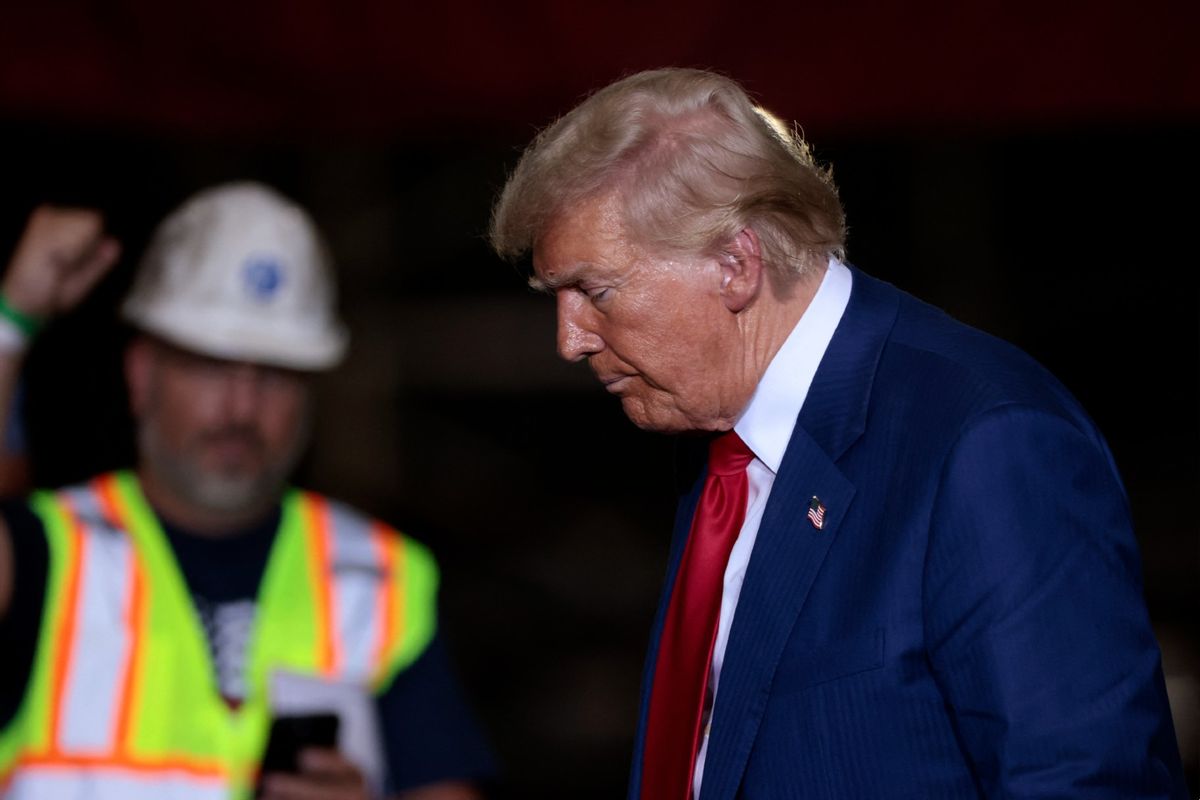This past week, former President Donald Trump delivered a speech in Potterville, Michigan, claiming that thousands of supporters lined the streets to greet him. However, recent footage from local news outlet WLNS Channel 6 News contradicts his statements, revealing that there were not nearly as many people present as Trump suggested.

Trump’s speech in Potterville was marked by his assertion that as he approached the venue, he saw “thousands and thousands” of people outside, stretching “as far as the eye could see.”
He used this claim to portray himself as a figure of continued widespread support. However, video evidence captured by WLNS shows a starkly different reality. The footage clearly indicates that there were not thousands of people as Trump had described. In fact, there were relatively few individuals outside the venue.
The exaggeration of crowd sizes is not a new tactic for Trump. At various events, he has consistently overstated the number of attendees. For example, Trump once claimed that over 107,000 people attended his rally in Wildwood, New Jersey, even though the venue’s capacity was only 20,000. This pattern of inflating numbers seems to be a strategy to project an image of unwavering popularity.
In Potterville, a small town with a population of just over 3,000 people, the notion that thousands lined the streets for Trump’s arrival seems implausible. Local reporters have frequently documented Trump’s tendency to embellish the scale of his rallies and events.
Beyond just his crowd size claims, Trump has also been known to wave to non-existent crowds or use edited footage to make it appear as though he is drawing large, enthusiastic audiences.
These false narratives have drawn criticism not only from the media but also from political figures. During a speech at the Democratic National Convention, former President Barack Obama highlighted Trump’s obsession with crowd sizes as part of a broader critique of Trump’s focus on his own image rather than on substantive issues affecting Americans.
Trump’s recent appearance in Potterville is another example of his continued use of exaggerated claims and false statements. As he gears up for the 2024 election, his attempts to manipulate public perception through misleading portrayals of support raise questions about his credibility and the effectiveness of such tactics in winning over voters.
Ultimately, Trump’s repeated misrepresentations about the size and enthusiasm of his crowds reflect a broader strategy to maintain his political relevance. However, as more evidence emerges contradicting his claims, it remains to be seen how these tactics will resonate with the electorate moving forward.




